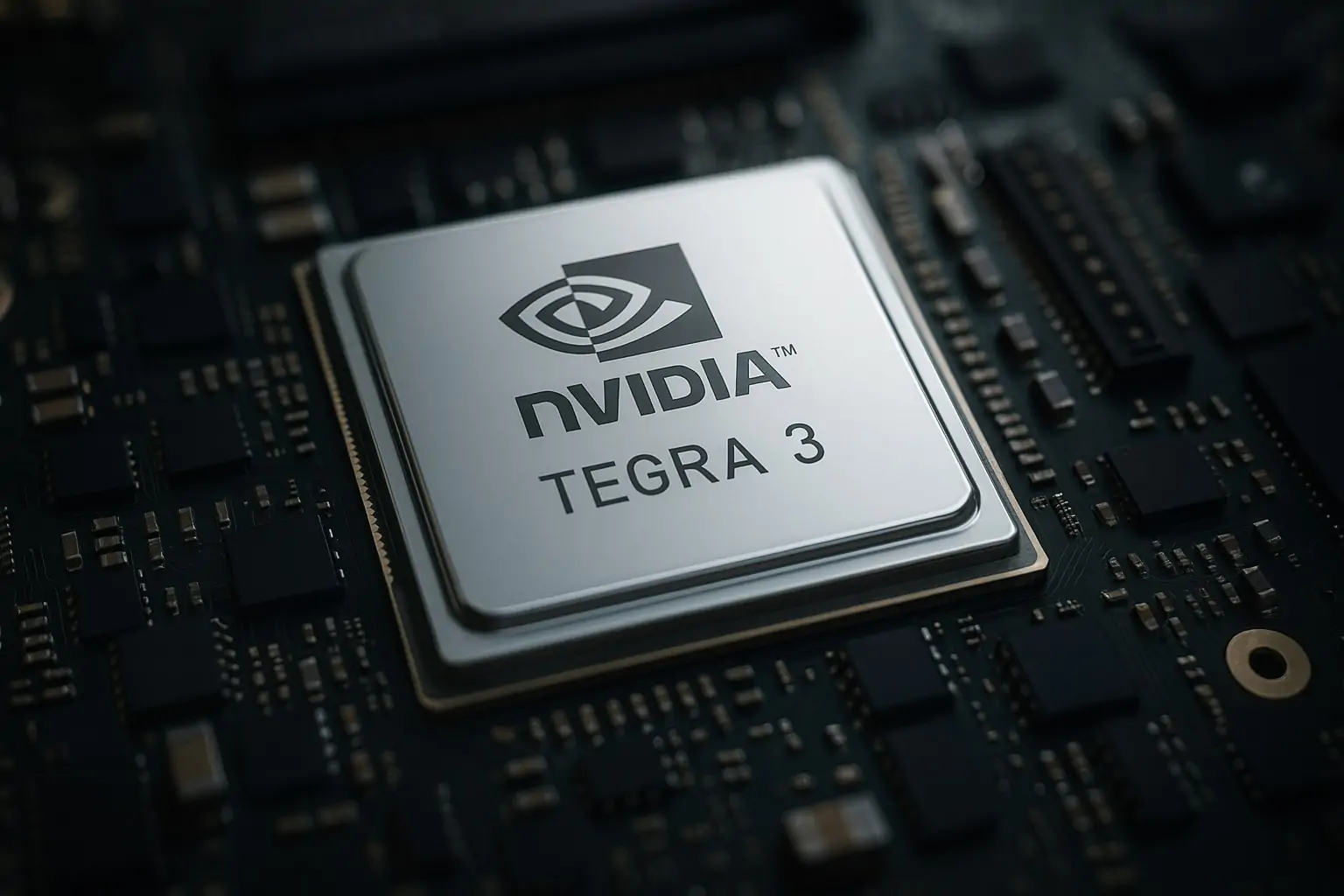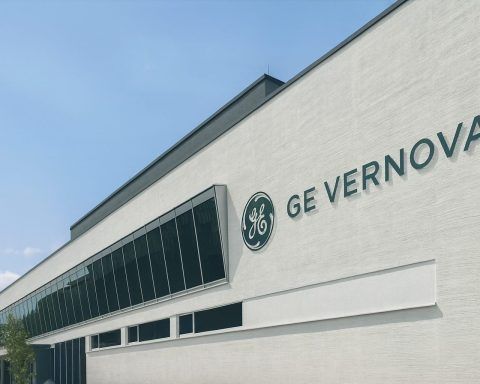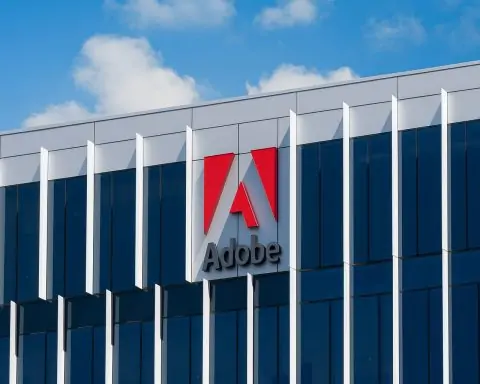NVIDIA Corporation (NASDAQ: NVDA), now the world’s most valuable listed company by market capitalization, is having another wild trading session today as investors digest blockbuster earnings, a major new AI infrastructure partnership with Foxconn, and fresh signs of both deep conviction and growing anxiety around an AI-driven market bubble. [1]
NVDA stock today: volatile trade after a record quarter
By early afternoon on Friday, 21 November, NVIDIA shares were trading around $180.64, roughly 3% below yesterday’s close of $186.44, after a sharp pre‑market drop of about 3.1% that followed Thursday’s violent reversal on Wall Street. [2]
- An AInvest “Before the Bell” note highlighted that NVDA fell 3.15% pre‑market despite posting record quarterly revenue, as investors questioned whether AI valuations have run too far, too fast. [3]
- Data from multiple sites put NVIDIA’s market cap around $4.4–4.5 trillion, keeping it at or near the top of the global rankings. [4]
Thursday’s session captured the mood: NVDA surged more than 5% intraday after its earnings report, then flipped to close down about 3.2%, dragging the Nasdaq and S&P 500 to their lowest closes since early September. [5]
Today, that risk‑off tone is continuing:
- Tech and AI names remain under pressure globally as traders fret over stretched valuations and the possibility that AI capex may not translate into sustainable earnings. [6]
For traders, the message is simple: fundamentals are on fire, but sentiment is fragile.
Q3 FY2026: “Off‑the‑charts” AI demand
On Wednesday, NVIDIA reported record Q3 FY2026 (quarter ended 26 October 2025) results that easily cleared Wall Street’s high bar: [7]
- Revenue: $57.0 billion, up 22% quarter‑over‑quarter and 62% year‑over‑year
- Data center revenue: $51.2 billion, up 25% QoQ and 66% YoY, underscoring NVIDIA’s dominance in AI infrastructure
- GAAP and non‑GAAP EPS: $1.30 per diluted share, up about 60–67% from a year earlier
- Gross margin: ~73–74% on both GAAP and non‑GAAP bases
For Q4 FY2026, NVIDIA guided for:
- Revenue around $65 billion (±2%)
- Gross margin around 75% (non‑GAAP) [8]
CEO Jensen Huang described Blackwell GPU sales as “off the charts” and said cloud GPUs are effectively sold out, arguing that AI has entered a “virtuous cycle” as more industries adopt accelerated computing. [9]
On capital returns and balance sheet:
- NVIDIA has returned $37 billion to shareholders over the first nine months of FY2026 via buybacks and dividends, and still has about $62.2 billion left under its repurchase authorization. [10]
- The company declared a $0.01 per‑share quarterly dividend, payable 26 December 2025 to shareholders of record on 4 December 2025. [11]
These numbers are the backbone of the bull case: NVIDIA is not just growing fast; it’s generating enormous profits and cash at very high margins.
Foxconn partnership: $1.4B Taiwan AI supercomputer for 2026
The headline strategic news today is NVIDIA’s deepening alliance with Foxconn on AI infrastructure in Taiwan:
- Foxconn announced that a $1.4 billion supercomputing center, built in partnership with NVIDIA and the Taiwanese government, is expected to come online in the first half of 2026. [12]
- The 27‑megawatt data center will be powered by NVIDIA’s new Blackwell GB300 chips, making it Asia’s first GB300 AI data center and Taiwan’s largest GPU cluster. [13]
- Foxconn says it can already manufacture around 1,000 AI racks per week, with plans to increase that capacity next year, positioning itself as NVIDIA’s main maker of AI racks. [14]
NVIDIA is using this project to push a GPU‑as‑a‑Service model:
- Rather than every enterprise building its own AI facility, the Foxconn partnership emphasizes leasing compute—allowing customers to scale up and down with business cycles. [15]
- The new Visionbay.ai unit inside Foxconn will offer GPU leasing, NVIDIA‑native software, and a cloud‑style AI “app store,” reducing barriers to adopting large‑scale AI. [16]
Strategically, this dovetails with NVIDIA’s 10‑gigawatt partnership with OpenAI, under which NVIDIA plans to invest up to $100 billion in systems for OpenAI’s next‑generation AI datacenters over the coming years. [17]
Together, these deals reinforce a simple theme: NVIDIA doesn’t just sell chips; it’s trying to own the AI compute layer, from silicon to cloud‑scale infrastructure.
ARK Invest comes back to NVDA with a ~$17M buy
In another closely watched move today, Cathie Wood’s ARK Invest turned bullish on NVIDIA again:
- ARK Innovation ETF (ARKK) bought 93,374 NVDA shares on 20 November, valued at about $16.9–17.5 million based on recent prices. [18]
- Multiple reports confirm this is ARK’s first NVIDIA purchase since 4 August 2025, ending a roughly three‑month pause. [19]
ARK simultaneously trimmed AMD and added several crypto‑related names, framing the NVIDIA buy as a conviction bet on the AI leader while rotating out of some previous high‑flyers. [20]
The optics matter: ARK is known for leaning into volatile innovation names. Buying NVDA into an AI‑bubble scare signals that at least one high‑profile growth investor sees the current pullback as an opportunity rather than the start of a collapse.
Wall Street’s take: strong demand, higher targets, frothy valuation
Analyst commentary today is almost uniformly positive on fundamentals, even as the stock drops:
- Truist Securities analyst William Stein highlighted that even six‑year‑old A100 GPUs are still running at “100% utilization”, arguing this is the opposite of bubble behavior where unused hardware piles up. He raised his NVDA price target from $228 to $255 and reiterated a Buy rating. [21]
- DA Davidson bumped its FY2026 EPS estimate from $4.08 to $4.43 and reaffirmed a Buy with a $250 price objective. [22]
- The same MarketBeat summary notes that, across the Street, NVDA currently carries 4 “Strong Buy,” 45 “Buy,” 2 “Hold” and 1 “Sell” ratings, with an average price target around $256. [23]
Despite today’s slide, NVIDIA is still priced aggressively:
- One set of metrics from MarketBeat puts NVDA at a P/E around 51 and a PEG ratio near 1.5, underlining how much future growth is already embedded in the stock. [24]
A separate 24/7 Wall St. piece published today frames the stock in bull, base and bear scenarios out to 2030, emphasizing NVIDIA’s estimated ~80% share of the AI accelerator market and the potential size of a $400 billion AI chip market by 2030, but also highlighting geopolitical and China‑related risks. [25]
Are we in an AI bubble? Huang vs. the skeptics
The central narrative running through today’s coverage is the AI bubble debate.
Huang: “We see something very different”
On the Q3 earnings call, and in follow‑on commentary highlighted by Finviz and Nasdaq, Jensen Huang pushed back firmly against AI‑bubble chatter: [26]
- He argued that the world is going through three major platform shifts at once:
- From CPU‑only to GPU‑accelerated computing
- From traditional machine learning to generative AI
- Toward agentic and physical AI, where models plan tasks and interact with the real world
The implication: today’s AI capex is not a speculative fad but the infrastructure build‑out for a new computing era. CFO Colette Kress added that NVIDIA now has visibility to roughly $500 billion in Blackwell and Rubin revenue through the end of 2026, underscoring the depth of the pipeline. [27]
Skeptics: earnings don’t eliminate bubble risk
Yet several data points released over the last 24 hours show that strong earnings haven’t ended bubble concerns:
- Reuters notes that four customers accounted for 61% of NVIDIA’s Q3 sales, up from 56% in Q2, heightening worries about customer concentration and “circular” AI financing where NVIDIA both sells chips to, and invests in, the same AI firms. [28]
- MacroMicro’s fresh deep‑dive today points out that NVIDIA’s inventory days rose to around 103 from 91 and that AI‑linked sectors like automotive and robotics are seeing slower growth, even as cloud‑driven data-center sales soar. The report highlights metrics like capex‑to‑revenue and market concentration as key indicators to watch for bubble formation. [29]
- Investopedia’s bubble analysis notes that while NVIDIA’s numbers are “still strong,” the market reaction—a huge intraday swing from +5% to roughly −3%—shows investors are increasingly divided on whether AI spending will pay off. [30]
In short: fundamentals scream “boom” while price action whispers “be careful.”
Big picture: key risks and opportunities after today’s headlines
Putting all of 21 November 2025 together, NVIDIA sits at the center of a tug‑of‑war between enthusiasm and caution.
Upside drivers
- Explosive AI infrastructure demand
- Record Q3 revenue and Q4 guidance show that hyperscalers and enterprises are still racing to deploy NVIDIA GPUs at massive scale. [31]
- Deep ecosystem moat
- CUDA software lock‑in, leadership in Blackwell‑class accelerators, and alliances with OpenAI, Microsoft, Google, Oracle, xAI and Foxconn all reinforce NVIDIA as the default AI platform. [32]
- Capital returns & balance sheet strength
- Tens of billions in cash generation, ongoing buybacks, and a still‑low cash dividend give NVIDIA flexibility to invest, acquire, and support the stock. [33]
Key risks
- Valuation and sentiment risk
- With the stock priced for exceptional growth, any slowdown in AI capex or shift in sentiment—like the last two days—can trigger outsized moves. [34]
- Bubble‑style concentration
- NVIDIA’s growing reliance on a handful of mega‑customers and its investments in those same firms raise questions about how sustainable current order levels are. [35]
- Geopolitical & regulatory overhang
- Export controls limit access to China, forcing NVIDIA to lean harder into regions like the Middle East and partnerships like OpenAI and Foxconn. Political shifts or further restrictions could easily alter the growth trajectory. [36]
- Physical constraints
- Analysts are increasingly focused on whether power, land, and grid capacity can keep up with AI datacenter plans through 2026 and beyond, potentially capping how fast current backlogs turn into recognized revenue. [37]
Key takeaways for NVDA on 21 November 2025
- Stock: NVDA is down roughly 3% today, extending Thursday’s post‑earnings reversal despite record results and raised guidance. [38]
- Earnings: Q3 FY2026 delivered $57B in revenue, 62% YoY growth and mid‑70% gross margins, with a Q4 revenue outlook of ~$65B. [39]
- Strategic deals: A $1.4B Taiwan supercomputing center with Foxconn and a 10‑gigawatt OpenAI partnership further entrench NVIDIA at the center of global AI infrastructure. [40]
- Flows & ratings:ARK Invest’s ~$17M NVDA buy and a string of upgraded analyst targets in the mid‑$200s show institutions still leaning bullish, even as they publicly acknowledge AI‑bubble risks. [41]
- Debate: The AI bubble discussion is intensifying, not fading—with Huang insisting this is a durable platform shift and macro strategists warning about capex, concentration, and valuation risks. [42]
For investors, today’s message is less “NVDA is broken” and more “the margin for error is shrinking.” Earnings, partnerships and demand are all pointing one way; sentiment and macro worries are tugging the other.
Disclaimer: This article is for informational and news purposes only and does not constitute investment advice or a recommendation to buy or sell any security. Always do your own research or consult a licensed financial adviser before making investment decisions.
References
1. www.reuters.com, 2. www.ainvest.com, 3. www.ainvest.com, 4. companiesmarketcap.com, 5. www.reuters.com, 6. www.reuters.com, 7. investor.nvidia.com, 8. investor.nvidia.com, 9. investor.nvidia.com, 10. investor.nvidia.com, 11. investor.nvidia.com, 12. www.tipranks.com, 13. www.reuters.com, 14. www.reuters.com, 15. www.reuters.com, 16. coincentral.com, 17. nvidianews.nvidia.com, 18. blockonomi.com, 19. seekingalpha.com, 20. www.benzinga.com, 21. www.tipranks.com, 22. www.marketbeat.com, 23. www.marketbeat.com, 24. www.marketbeat.com, 25. 247wallst.com, 26. finviz.com, 27. www.nasdaq.com, 28. www.reuters.com, 29. en.macromicro.me, 30. www.investopedia.com, 31. investor.nvidia.com, 32. investor.nvidia.com, 33. investor.nvidia.com, 34. www.reuters.com, 35. www.reuters.com, 36. www.reuters.com, 37. www.reuters.com, 38. www.reuters.com, 39. investor.nvidia.com, 40. www.reuters.com, 41. blockonomi.com, 42. finviz.com







